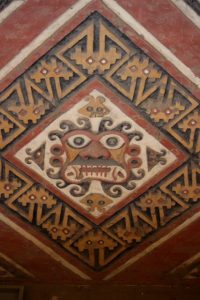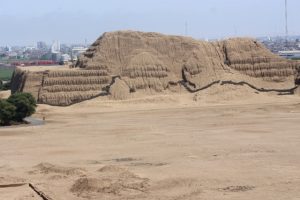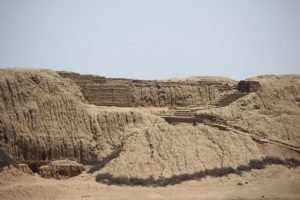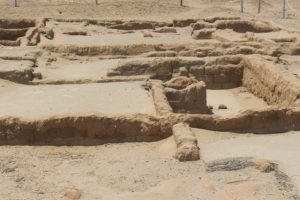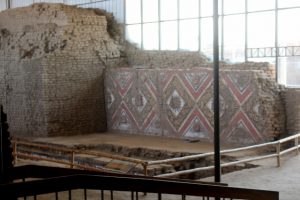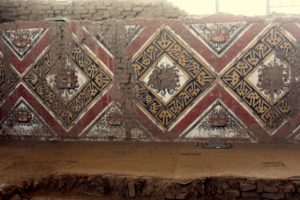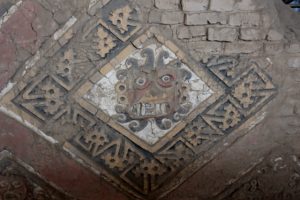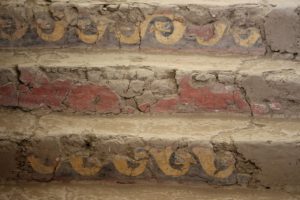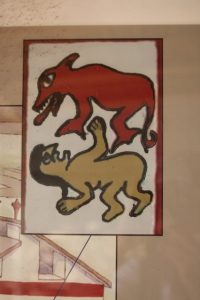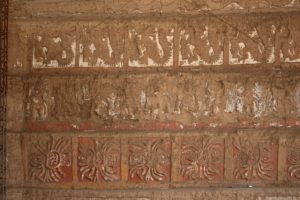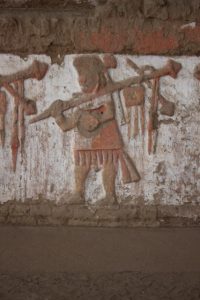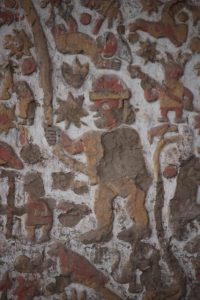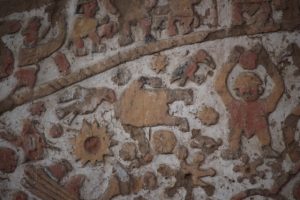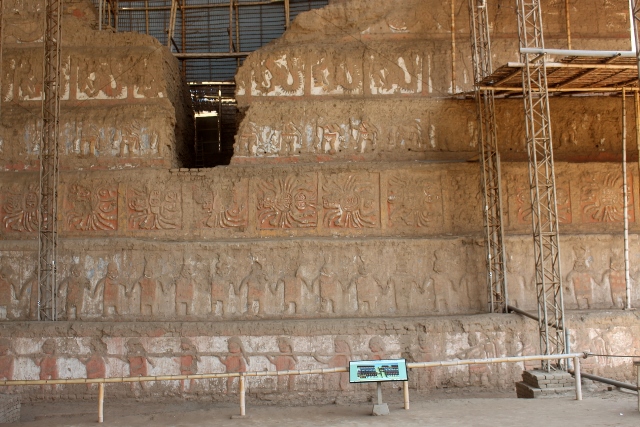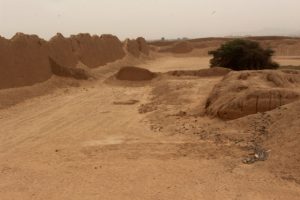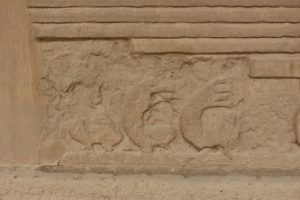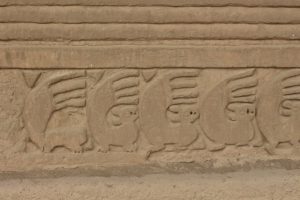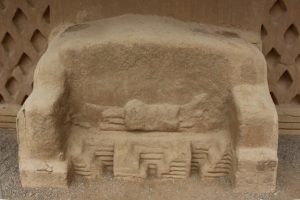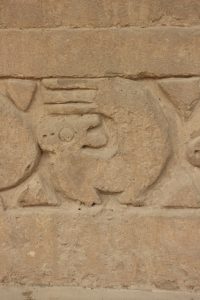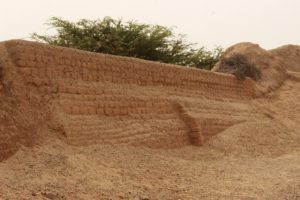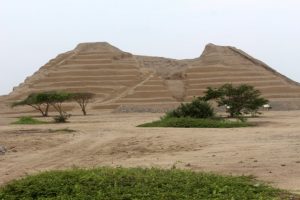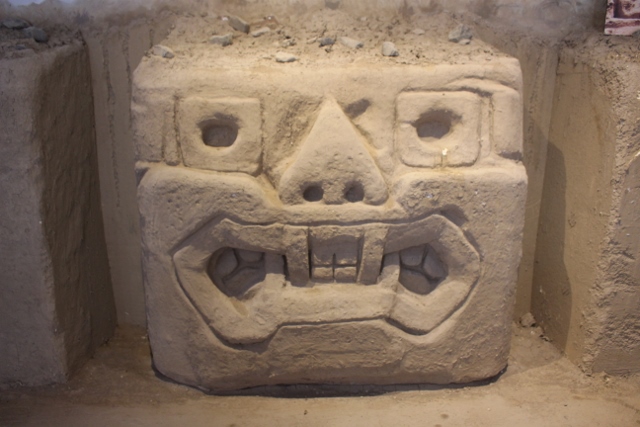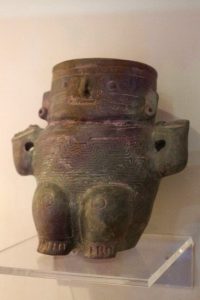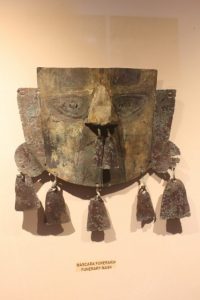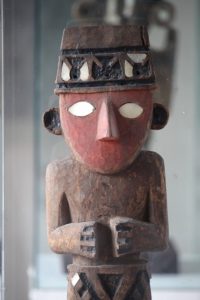Just outside Trujillo there are the remain of several ancient Peruvian cultures, in the Temple of the Sun and that of the Moon, and in Chan Chan, the largest adobe city in the world – of which not much is left.
As everywhere in Peru, Trujillo also has its share of remnants of past Peruvian cultures. The Moche, whose art treasures from the burial site of the Lord of Sipan we have seen earlier, nearby Chiclayo further north, had their main centre just south of here, where they built the Temples of the Moon and the Sun. The Huaca del Sol, in Spanish, was the largest single structure in Peru, and is in remarkable shape, given that it was probably built more than 1500 years ago. Its structure is far more readily recognisable than the adobe pyramids seen earlier in Sipan and Tucume, even though much of it is gone. It is estimated that the original building consisted of more than 130 million adobe bricks, contributed by more than a hundred communities: in the ancient systems, tax was collected in the form of work, which included the provision of bricks, marked with a symbol of the community that contributed them. Unfortunately, about two-thirds of the building has disappeared, as Spanish grave robbers, looking for even more gold and silver, diverted a whole river to wash a way a significant part of the temple to create access to the lower levels. The disadvantage of adobe, which is nothing more than sun-dried mud, of course. Unfortunately, there has not yet been much work done by archaeologist, most likely because of lack of funds, and the temple remains off-limits.
Better accessible is the Huaca de la Luna – Temple of the Moon. Here we can enter, albeit only in company of an official guide, and admire the internal structure of the temple, too. I say ‘admire’ because large parts of the walls of the temple have been decorated with a variety of symbols, of which the colours are still vividly visible. Apparently, the temple consists of five ‘shells’, as each subsequent temple covered the old walls and built a new level on top, a bit like a Russian Matruschka doll. We only see three of the five level, the deeper ones not having been excavated – because this can only be done at the expense of the higher levels. The best is left for last, when we get to a large square in front of the temple, which is decorated five layers high, each layer with its own symbol. This must have been quite something, so long ago, when all the colours were still brightly red, white, yellow, blue and black.
In between the temples are the remains of residential dwellings, not as spectacular. And as with many of the archaeological sites of Peru, there is a small site museum, which is quite attractively set up.
Somehow, the Moches disappeared, and were succeeded by the Chimu culture, contemporaneous with the Sican, who built Tucume near Chiclayo. The Chimu also used adobe, and did this to build the largest adobe city in the world at Chan Chan, north of Trujillo. This complex, built around 1300 AD and perhaps covering 20 sqkm, consisted of up to ten individual walled compounds, with large squares and temples and corridors. From most of those, just the walls seem to have survived the combined onslaught of Spanish grave robbers and El Nino rains, and quite some imagination is necessary to envision a grand capital city with up to 60,000 inhabitants. But help is at hand, as one of the compounds has been partially restored, with smooth new walls which outline the original buildings, covered by corrugated iron sheets. I suspect that most of the adobe friezes, the decorations along the walls, have also been restored, if not newly added, as they look too smooth to be original. The decorations include geometric patterns, fishes and bird. It is nicely done, but lacks authenticity. A strictly laid-out walking path means that free wandering around is also no option, although with some ingenuity I manage to reach places that at first look appear closed to the public.
Wandering outside the restored compound is strongly discouraged, because of potential muggings in between the crumbling adobe walls. We take some measured risks, and do wander around a bit, until we get to the obligatory site museum, which we reach from the back. A pyramid, Huaca Toledo, begs to be climbed, but here my ingenuity fails, as just after I am half way up, I am whistled back by one of the guards of the museum. It seems that you were not supposed to climb the pyramid?
next: heading south, to Sechin
